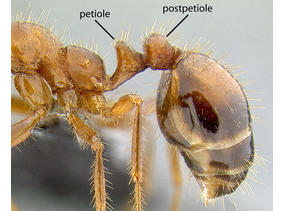TAXA (also search by using taxonomy search bar in header)
Solenopsis invicta Buren, 1972
Nomenclature
-
Synonyms: 1
SUMMARY
Solenopsis invicta, often referred to as the red imported fire ant, or RIFA, is among the world's most infamous, aggressive and widespread invasive ant species. It is capable of causing serious medical, economic and ecologic problems wherever it occurs. The species is called the red imported fire ant because it is red, it was accidentally introduced into to the United States (imported), and the painful stings it inflicts cause a burning sensation (fire ant). In addition to being a nuisance species and a public health concern, RIFA has been documented to harm wildlife, including vertebrates and invertabrates. The species is also considered a pest because of the conspicuous nest mounds they build in the soil of open landscapes such as lawns, parks and agricultural fields. The mounds are known to reduce land values and agricultural productivty. Humans and other vertebrates are most often attacked after inadvertently disturbing a mound, which causes tens to hundreds of worker ants to pour out of their nest in defence. The sting of Solenopsis invicta has venom composed of a biocidal alkaloid, which causes burning pain and the formation of white pustules [1]. The species is native to South America, but has become established in the western and southern United States, the Caribbean, Australia, Taiwan, Hong Kong, and Macau [2], in addition to the southern Chinese provinces of Guangdong, Guangxi, Hunan, Fujian and Jiangxi [3].
References
- W. R. Tschinkel, The Fire Ants. Cambridge, MA: Harvard University Press, 2006, p. 744.
- M. S. Ascunce, Yang, C. - C., Oakey, J., Calcaterra, L., Wu, W. - J., Shih, C. - J., Goudet, J., Ross, K. G., and Shoemaker, D., “Global Invasion History of the Fire Ant Solenopsis invicta”, Science, vol. 331, no. 6020, pp. 1066 - 1068, 2011.
- R. Zhang, Li, Y., Liu, N., and Porter, S. D., “An overview of the red imported fire ant (Hymenoptera: Formicidae) in Mainland China”, Florida Entomologist, vol. 90, no. 4, pp. 723 - 731, 2007.






